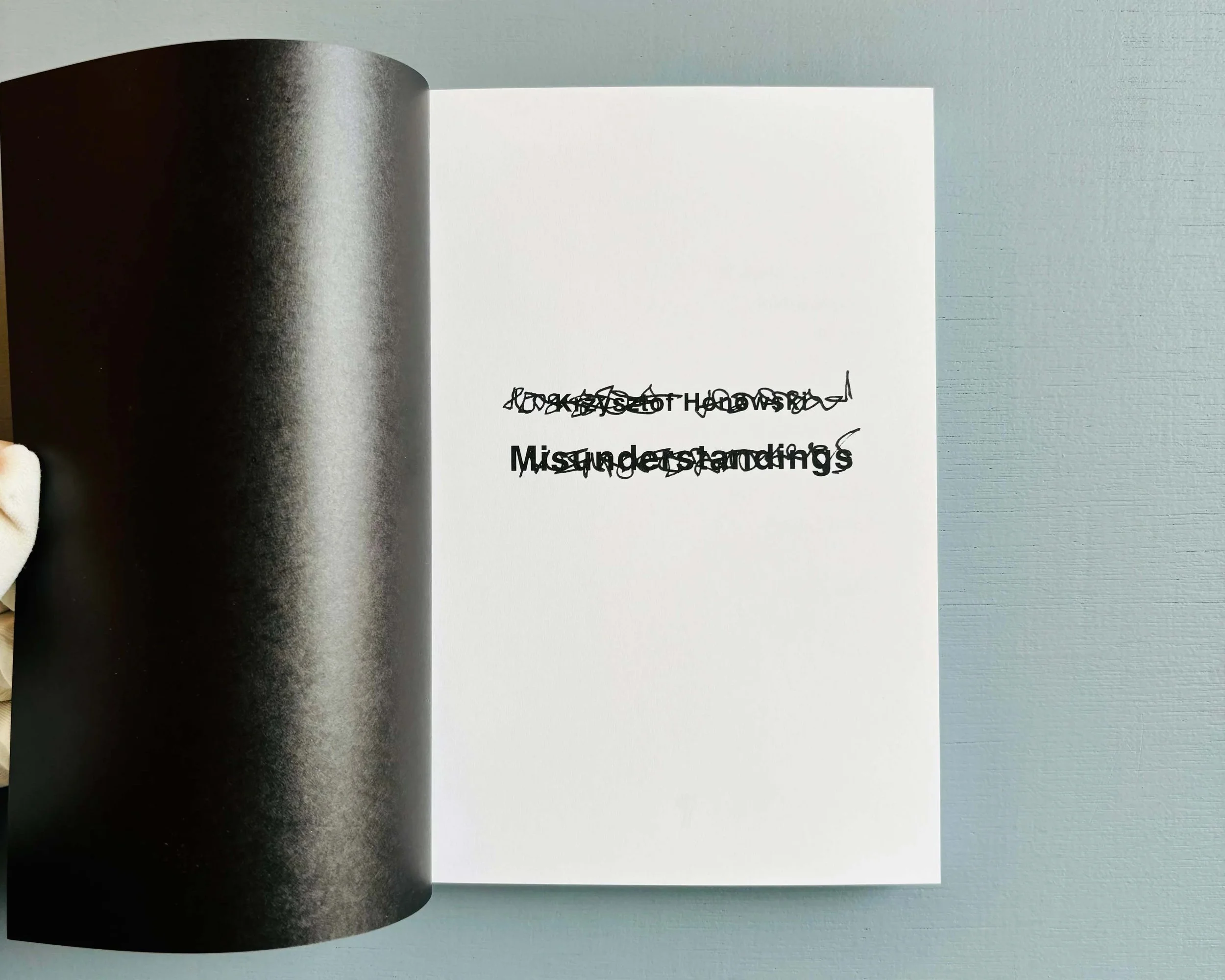Harold Offeh I mean, he's not someone that I've known for that long... Although I have been aware of him since I was an undergraduate. When I was reading Frantz Fanon, which was a bit of a rite of passage, Glissant was somebody that came up around that, but I didn't really delve in any depth into his work, or know that much about him. Again, I think that's more of an Anglo / French issue. It's interesting, certainly in art critical discourse, one that is so dominated, perhaps less so now, but this was certainly true when I was studying, that the art historical discourse was dominated by the post-structuralist school. People outside of that, and Glissant is coming from literature, more than criticism - there's often an inherent skepticism in art and critical theory of literature. That's despite the fact that literary criticism informs all of that stuff anyway. Think of people like Terry Eagleton. There's an absence of literature in art discourse. The attitude is let's talk about novels!!! so I think maybe that's why he hasn't been placed in that cannon of people that are referenced. It has taken time for an English speaking community to really discover, or to even begin to excavate the body of his work.
Krzysztof Honowski Is it also a refusal of the poetic, do you think? I find that with quite a few artists that I know, I don't speak to critics quite as regularly, but artists that I know feel very uncomfortable describing 'the poetic' as a strategy that they use.
HO Yeah, I mean it's kind of weird, I love these kind of art bête noires; things like ‘art is anti- theatre’, so anything theatrical is eurgh or then the poetic is deeply problematic. Again I think this comes out of underlying Marxist rejections of bourgeois culture, anything that seemingly echoes that becomes really problematic. What you then get are these weird orthodoxies, that certainly I saw being perpetuated, to a certain extent are still being perpetuated, in art schools where there is a disavowal of particular languages or references, or things that are associated with a kind of bourgeois attitude. It's interesting and also quite depressing.
KH A lot of these things seem to come up from certain misunderstandings… I'm going to push my theme here.
(laughter)
HO I think it does, it's a prime example really.
BB Yeah, that's a whole like... Had I have stayed like in London maybe my ideas like, you know, my sort of, criticisms regarding like race and regarding like, this concept of whiteness would have been probably like differently expressed. Purely because like, London is still somewhere I consider multicultural, in the sense that there's so many different diversities living there and they all may not like get along with each other. But like, I think that there's a stronghold? A stronghold?
KH A stronghold? Yeah.
BB There's a stronghold there, that like, you know, exists that like, that I grew up with. And that's not to say that I didn't grow up with racism. Of course I did. Like, you know, I have people who like stuff who've supported Millwall Football Club living on the same estates I did, who acted like the people who would support Millwall Football Club. I also lived in South Bermondsey, which was like, you know, London's armpit.
KH Was?
BB Oh, is it gentrified?
Bishop Black I mean, like, this wasn't the sort of topic that I was intending to talk about, but like, at the same time, I guess that means there's already a misunderstanding as to what we shall be talking about. And it's also like, you know, funny that at due last we should be talking together on a recording device regarding, like, you know, things that we talk about on a day to day basis.
Krzysztof Honowski Exactly. Yeah.
BB So, yeah, I mean, like, I guess this is just a thing that kind of occurred only because, like, you know, this idea of, like, whiteness was kind of like, glaringly obvious when I moved to like Germany. So if I had stayed in the UK, for example, and I didn't move, like, you know, almost eight years ago. Like there's about 15 days left before it's eight years.
KH Really?
BB Yeah. Now things got even more weirder because of the whole Brexit situation. But that's another topic.
KH That is really another topic. (slightly manic laughter)
Misunderstandings
by Krzysztof Honowski
An artist’s book of conversations about misunderstanding.
This project built upon a day of collaborative interventions that Krzysztof Honowski staged as Idle / Idyll / Idol at Kunsthalle Düsseldorf in 2015 with Sarah Boulton, Peter Cant, Filip Caranica, Alex Eisenberg, Michael Hrebeniak, Sophie Jung, Harold Offeh, Charles Richardson, and Masha Tupitsyn.
The participants for the first edition of Misunderstandings were Harold Offeh, Peter Cant, Melissa E. Logan, Clare Molloy, Mi You, and Felicita.
Misunderstandings was originally published in November 2017 and is distributed by Pro QM, Berlin and Buchhandlung Walther König, Köln.
160 pages, b/w, tipped-on photographic cover and rear plates
All the Misunderstandings 2017-2019 will be published in Autumn 2024 by Pilcrow Editions, with an essay by Fanny Paul Clinton and new conversations with Liad Hussein Kantorowicz and Bishop Black.
274p - b/w - 19x13cm - full colour cover
Krzysztof Honowski has not misunderstood, although misunderstanding and the construction of cultural identity form the core interests of his work. He knows that Young and Bidgood are aesthetic bedfellows and not rivals, for he is an expert at mining the queerness of the past. That is to say, he not only revisits historic gay culture, but finds faggotry where it supposedly was not. With Peter Cant, he has reformulated Kenneth Anger’s faggy film on commodity fetishism, Kustom Kar Kommandos (1965), and several years ago Honowski staged the preparations of dyke icon Valerie Solanas shortly before she shot Andy Warhol. Another work, Walking Through Clear Water (2017) features elements of Young – drone-like sounds, the pink light, the spatialized amplification – but in place of the sculptures are enigmatic photographs and colourful backlit panels. These last, look like the inside of a kaleidoscope or the magnified petals of artificial flowers and are covered in soil – a marriage of the divine and the defiled reminiscent of Bidgood whose bright sets were made out of materials salvaged from the garbage. Honowski’s sifting through history is not only genealogical then, but a system of counter or transvaluation: finding value and desirability in the cheap imitation, without attempting to obscure its poverty. Anger’s original film deploys camp imagery to parody the commodification of desire (a young man buffing his hot rod with an oversize powderpuff). Honowski’s Kustom Kar Kommandos Karaoke (2016) – which, like his later light panels, features artificial flowers alongside sequins and pink fabric – trades in tawdry and sullied glitz.
From Muddying the Waters - Misunderstanding, enlightenment and value in the work of Krzysztof Honowski by Paul Clinton
Photos above courtesy Saint-Martin Bookshop, Brussels. Photos below document the first edition of Misunderstandings.
MY No, the English translation of the term. 'Yellow', is just an approximation found for the convenience of translating it. My skin isn't yellow. Gradually the term became more racialised, more of a racist thing, when it became part of the conjunction 'Yellow Peril'. The English term 'yellow' was translated into Chinese quite early, in the mid-19th century I think, maybe a bit later. This came in the first wave of translations of foreign texts into the Chinese language. People looked at this term 'yellow', and didn't perceive the racist connotation of it, or did feel the racist connotation of it, but thought that the colour yellow was quite nice. (Krzysztof laughs) Really! It's because the colour yellow is an imperial colour. That's why people happily accepted the term 'yellow', without feeling racially oppressed. (laughter)
KH That's a brilliant misunderstanding.
MY There are a lot of these kind of things, I guess. For quite a few decades it was a very neutral term in Chinese, until in the 20th Century even they realised that the 'Yellow Peril' is not intended as a good thing.
Mi You I only read so much about popular sports. The Yellow Peril is another story of misunderstanding. It's more linguistic, however. The Chinese people do acknowledge themselves as a 'yellow' people, and that term actually comes from Western ethnography/biology, and was often associated with the term 'Yellow Peril'. My question is, "why do they so happily accept this term?" I think it was probably in the 18th Century when some European Ethnographers started attributing to different people these different ideas of skin colour, I think the English translation is not even that accurate, looking this up I find that the term was originally proposed by Carl von Linné in Latin as “fuscus”, a dark or brown colour. And then appeared in a German translation as “gelblich.” When the tenth reedition of his book appeared, von Linné changed his terminology to “luridus”, meaning pale yellow, and inducing a ghastly feeling. The translation that describes the Chinese people as yellow is an approximate translation from the period.
Krzysztof Honowski So that’s the translation of von Linné into Chinese?





